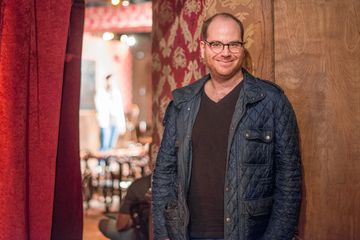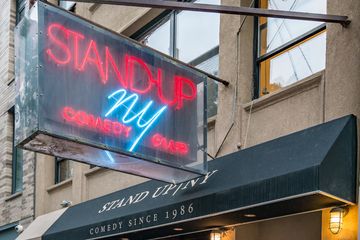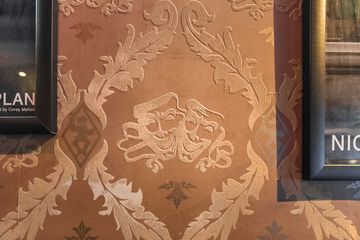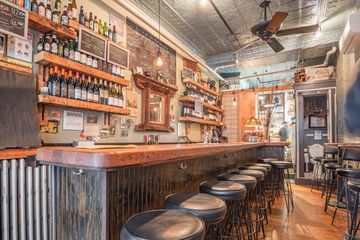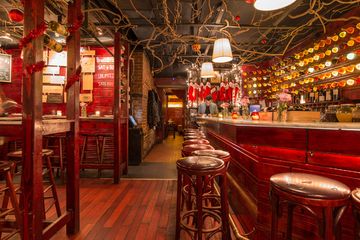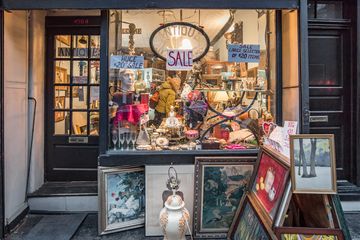
The jokes began almost as soon as I walked into Stand Up NY. I pointed out how clever it was to have a phone charging station by the bar and Gabriel Waldman, the co-owner, said with a smirk, “That’s what keeps us in business.” The bar, which feels like a neighborhood spot with velvet wallpaper decorated with comedy and tragedy masks, is only the appetizer; the room stretches back into a full performance space where stand up comedians try out their routines.
Gabe first came to Stand Up NY as a seventeen-year old. He performed for the very first time in a competition that the club was hosting. He did not win, but he quipped, “My mom thought I should have won!” Back then, the club was run by Cary Hoffman, a Frank Sinatra impersonator who opened Stand Up NY in 1986. Before Cary, the space was just a simple bar. Sometimes Gabe would visit Stand Up NY with his friend Dani Zoldan, who has been his “best friend since the tenth grade.” Dani would also come watch Gabe perform at Touro College in Brooklyn where he eventually received a degree in psychology. “I was not great in school,” Gabe admitted. “Comedy’s my main thing.” Despite his difficulty with academics, he then got a masters in social work and began his career working with disabled adults for three years. He used a lot of comedy to brighten the mood.
One day, Dani and Gabe learned that their old stomping ground was up for sale. They purchased and renovated it in 2009, turning the bar into a slightly more upscale lounge that would lure people off the streets. The partners got rid of a big banquette that used to occupy the space, opting for smaller stools, and secured a relationship with a local restaurant that could provide them with traditional bar food because, as Gabe pointed out, “No one ever says, ‘five Jack and Cokes and some edamame, please.’”
Despite the change in ownership, comics who got their start at Stand Up NY still drop by to say hello. Louis CK, Amy Schumer, and Chris Rock were among the names that Gabe said he has welcomed. Whenever they arrive, he is happy to halt any planned programming and invite them up on stage. Gabe also mentioned an “All Star" show, where viewers bring canned food to donate to a charity instead of paying for tickets. But the amateurs definitely get their time on the stage: Every Monday from 5-7pm and Thursday from 4-6pm, Stand Up NY hosts an open mic. Gabe jokes that all you need to perform on his stage is “$5 and a dream,” since you only need a fiver to put your name on the list. He says the demographic of comedians ranges from those who may eventually make it professionally to those who have a career and just want five minutes on the stage for fun. I sat and watched a few acts during the open mic and was surprised by the diversity of performers. There was everything from a middle-aged woman making jokes about being called “mature” to a young black man talking about how his nephew is starting to school him on “new rap.” It was enchanting to see the people in the audience showing respect and encouraging the people on the stage, even when they got stuck. As Gabe pointed out, the open mic is about trying material and seeing what causes laughter, not about being judged. He added, “I don’t feel like I’m some comedy guru who can critique them.”
